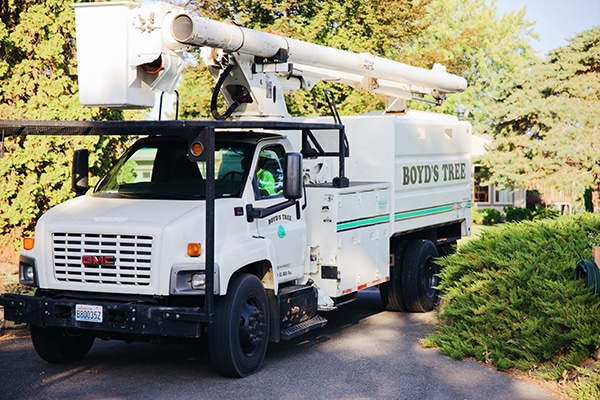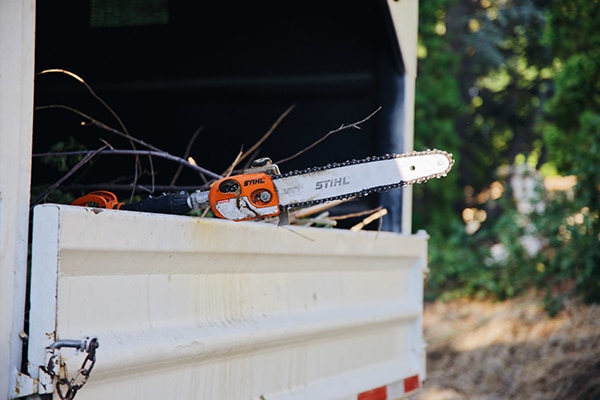Plants and trees experience life cycles through seasons as opposed to human beings, whose life cycles occur daily. We must receive adequate nutrients, water, and rest each day. In fact, the amount and quality of our rest helps to determine how healthy and productive we are.
Plants and trees go through similar processes. Most trees “sleep” or are dormant each winter. The amount and quality of their repose also is connected to their health and productivity.
So trees and plants require certain things during winter to ensure their vitality and appearance.
Preparing for the Cold Winter Ahead
For healthy plants, they are more likely to make it through winter undamaged. However, plants that have struggled during the growing season, because of inadequate sunlight, not enough water or nutrients, or heavy damage from insects or disease, will have a tougher time enduring the harshness of winter.
Having a plan of action for your plants before winter weather strikes will help ensure your plants stay healthy.
Here are some tips for that:
- Avoid pruning right after summer, as this brings about tender, new growth and postpones dormancy.
- Cease fertilizing plants six weeks prior to the first fall frost, as this helps plants harden off properly.
- Water plants thoroughly during the entire fall season until the ground freezes. Also, make sure the water seeps 12 inches to 18 inches deep to reach the root zone. What’s more, young or newly planted trees will need more tending to because of their limited abilities in getting water in their growing environment. Above all else, trees need enough moisture before winter freezes their area of soil.
Treating Outdoor Plants and Trees
When winter and its severe weather looms ahead, it is vital to protect the root systems of young plants and trees. This can be accomplished by applying a layer of mulch over the soil right around the root system. Mulch, which can be made up of natural substances such as wood chips, leaf/yard compost, sawdust, or straw, serves as an insulator that shields the roots when the temperature plummets in late fall/winter/early spring. Mulch is essentially a weed deterrent and assists in maintaining moisture during the growing season. This regimen is a simple process to avoid numerous problems at the root level throughout the year.
Tree Wraps
After summer, the grass and ground-covers harden, prompting rabbits to chew on tree bark. This threat becomes more prevalent with increases in cold weather and snow cover. Rabbits can chew trees up into their fifth and sixth season. Tree wraps are an obvious solution to this dilemma. The wraps also protect the trunk against sunscald and frost cracks due to variable temperatures from sun exposure during winter. The brunt of winter damage to the tree’s trunk occurs because of being warmed up on sunny winter days and then quickly chilled at nightfall. The trunk struggles to adapt to this sudden temperature drop.
As a result of these wide-ranging temperature fluctuations, the tree is vulnerable to fungal organisms that cause decay in the tree. The remedy for this is guarding the trunks of younger and smooth-bark trees up to the first branches using a flexible tree wrap. This wrap should stay on until after the last freezing temperatures.
Container Plants and Trees
When the temperature drops to 20 degrees Fahrenheit and stays there for a while, the core roots of the plants tend to freeze. Until such a time when you bring the plants indoors, be sure to thoroughly water the pots before cold snaps. This helps to protect the roots.
When cold winter temperatures strike and you are beginning to winterize, move your container plants into an unheated garage or shed, but not until you have watered the pots. If a plant is sturdy against the cold, leave it outside by mounding 4 to 6 inches of mulch around and over the top of the pot. Be sure to put plenty of water in the pot before mounding. You gain added protection by using a type of rodent bait in the sawdust or mulch to avoid mice depredation.
As it is true that how well we balance our sleep life with our work life can determine the quality of our later years, it is the case that plants endure four seasons each year and their rest period and our care can determine both their performance and longevity.
Let Boyd’s Tree Service Help Keep Your Trees Healthy
At Boyd’s Tree Service, we are a full-service tree and stump removal business that serves the Tri-Cities and surrounding areas. We pride ourselves on always making sure the trees in our communities are healthy and beautiful.
Boyd’s Tree Service has the tools, supplies, and experience to keep your trees and yard looking their best with a range of trimming, removal, and cleaning services.
If you live in the Tri-Cities and surrounding areas and you would like more information about our tree services or to schedule an appointment, we invite you to call Boyd’s Tree Service at (509) 585-4194.







